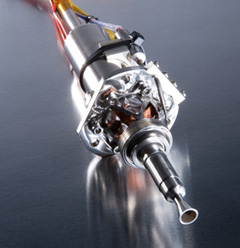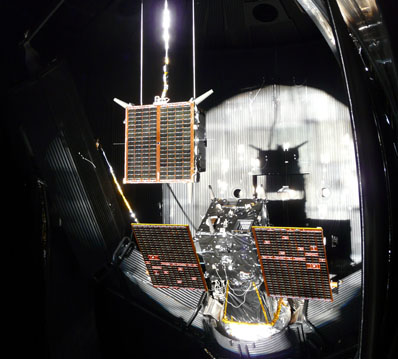Z
Zipi
Guest
Launch time: 14:42 GMT (10:42 am EDT)
Launch site: Yasny, Russia
An ISC Kosmotras Dnepr rocket will launch the Sweden's Prisma demonstration mission, including two satellites that will rendezvous and fly in formation using new and inexpensive technologies. The French space agency's Picard satellite will also launch to study the sun. Delayed from March 9, April 6, April 13 and June 3.
Picard Wikipedia Article: http://en.wikipedia.org/wiki/PICARD_(spacecraft)
CNES Picard Page: http://smsc.cnes.fr/PICARD/
Prisma Wikipedia Article: http://en.wikipedia.org/wiki/Prisma
Prisma Satellites: http://www.prismasatellites.se/?sid=9028
Swedish Space Corporation Prisma Page: http://www.ssc.se/?id=7611

Picard Satellite

Prisma Satellites
Dnepr Launch Vehicle
ISC Kosmotras Dnepr Launch Vehicle Page: http://www.kosmotras.ru/en/rn_dnepr/
ISC Kosmotras Dnepr Program Page: http://www.kosmotras.ru/en/program_dnepr/
Astronautix Dnepr Infos: http://www.astronautix.com/lvs/r36m.htm#Dnepr
Dnepr Wikipedia Article: http://en.wikipedia.org/wiki/Dnepr_rocket
NPO InterCoS Dnepr LV Page: http://www.npointercos.jp/DneprLV.html

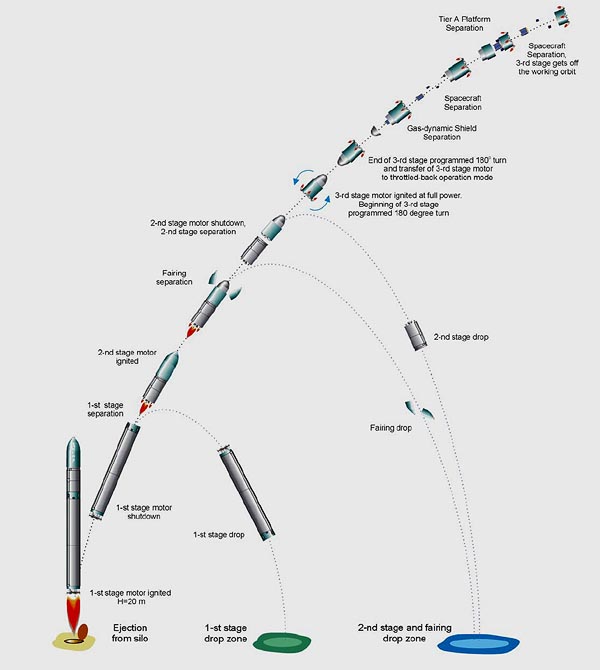

Ejection from silo/canister
GAS generator ejects Dnepr out from its silo or canister.
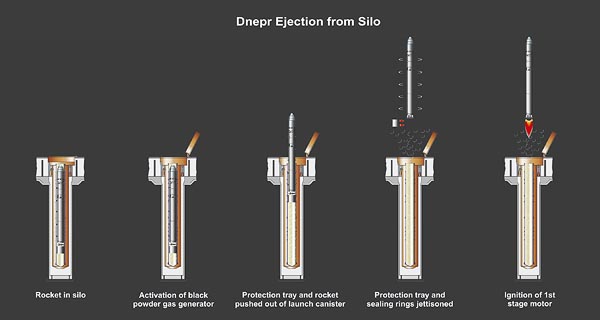

First Stage
One RD-264 engine burning N[sub]2[/sub]O[sub]4[/sub]/UDMH
Astronautix RD-264 Page: http://www.astronautix.com/engines/rd264.htm

Second Stage
One RD-0255 engine burning N[sub]2[/sub]O[sub]4[/sub]/UDMH
Astronautix RD-0255 Page: http://www.astronautix.com/engines/rd0255.htm
RD-0255 Manufacturer KBKhA: http://www.kbkha.ru/?lang=en
Third Stage
One RD-869 engine burning N[sub]2[/sub]O[sub]4[/sub]/UDMH
Astronautix RD-869 Page: http://www.astronautix.com/engines/rd869.htm
RD-869 Designer Yuzhnoye: http://www.yuzhnoye.com/?lang=en
Yasny Launch Base
ISC Kosmotras Yasny Launch Base Page: http://www.kosmotras.ru/en/yasniy/
Yasny Launch Base Wikipedia Article: http://en.wikipedia.org/wiki/Dombarovskiy
Russianspaceweb Yasny Page: http://www.russianspaceweb.com/dombarovskiy.html
Astronautix Yasny Page: http://www.astronautix.com/sites/domvskiy.htm
NPO InterCoS Yasny Page: http://www.npointercos.jp/Yasny.html
Google Maps Link: http://maps.google.com/maps?t=h&q=50.8, ... 27788&z=16
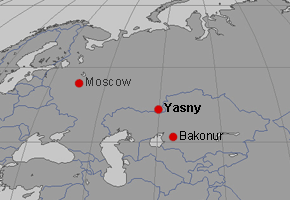
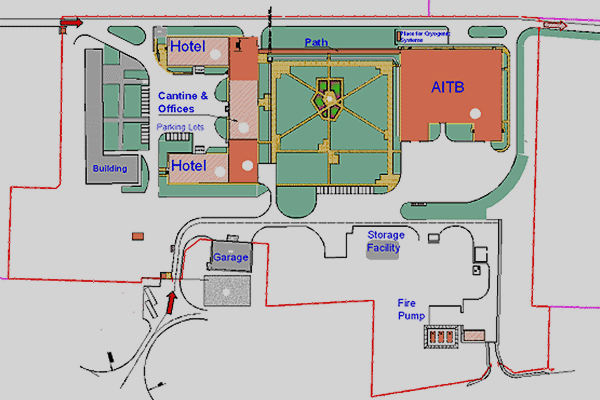
Launch site: Yasny, Russia
An ISC Kosmotras Dnepr rocket will launch the Sweden's Prisma demonstration mission, including two satellites that will rendezvous and fly in formation using new and inexpensive technologies. The French space agency's Picard satellite will also launch to study the sun. Delayed from March 9, April 6, April 13 and June 3.
Picard Wikipedia Article: http://en.wikipedia.org/wiki/PICARD_(spacecraft)
CNES Picard Page: http://smsc.cnes.fr/PICARD/
Prisma Wikipedia Article: http://en.wikipedia.org/wiki/Prisma
Prisma Satellites: http://www.prismasatellites.se/?sid=9028
Swedish Space Corporation Prisma Page: http://www.ssc.se/?id=7611

Picard Satellite

Prisma Satellites
Dnepr Launch Vehicle
ISC Kosmotras Dnepr Launch Vehicle Page: http://www.kosmotras.ru/en/rn_dnepr/
ISC Kosmotras Dnepr Program Page: http://www.kosmotras.ru/en/program_dnepr/
Astronautix Dnepr Infos: http://www.astronautix.com/lvs/r36m.htm#Dnepr
Dnepr Wikipedia Article: http://en.wikipedia.org/wiki/Dnepr_rocket
NPO InterCoS Dnepr LV Page: http://www.npointercos.jp/DneprLV.html



Ejection from silo/canister
GAS generator ejects Dnepr out from its silo or canister.


First Stage
One RD-264 engine burning N[sub]2[/sub]O[sub]4[/sub]/UDMH
Astronautix RD-264 Page: http://www.astronautix.com/engines/rd264.htm
Second Stage
One RD-0255 engine burning N[sub]2[/sub]O[sub]4[/sub]/UDMH
Astronautix RD-0255 Page: http://www.astronautix.com/engines/rd0255.htm
RD-0255 Manufacturer KBKhA: http://www.kbkha.ru/?lang=en
Third Stage
One RD-869 engine burning N[sub]2[/sub]O[sub]4[/sub]/UDMH
Astronautix RD-869 Page: http://www.astronautix.com/engines/rd869.htm
RD-869 Designer Yuzhnoye: http://www.yuzhnoye.com/?lang=en
Yasny Launch Base
ISC Kosmotras Yasny Launch Base Page: http://www.kosmotras.ru/en/yasniy/
Yasny Launch Base Wikipedia Article: http://en.wikipedia.org/wiki/Dombarovskiy
Russianspaceweb Yasny Page: http://www.russianspaceweb.com/dombarovskiy.html
Astronautix Yasny Page: http://www.astronautix.com/sites/domvskiy.htm
NPO InterCoS Yasny Page: http://www.npointercos.jp/Yasny.html
Google Maps Link: http://maps.google.com/maps?t=h&q=50.8, ... 27788&z=16




